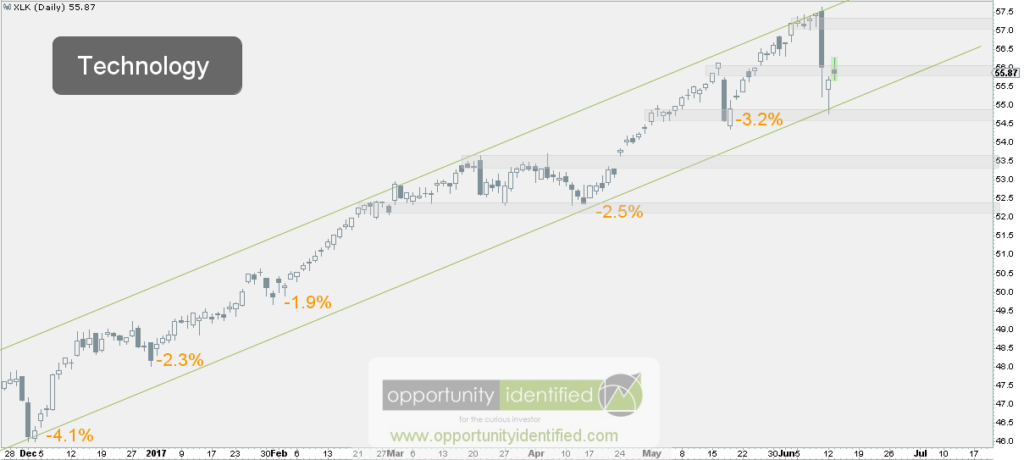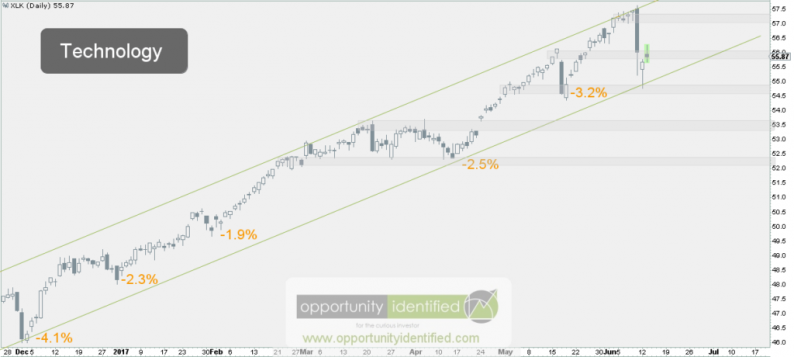Fear and greed are as old as the Garden of Eden. For many market participants, these are crippling emotions, often causing individuals to sell and buy at the wrong time. The market is extremely good at triggering these emotions, which can be valuable for survival, but detrimental when trying to make money in the market. Over the past two trading sessions, the U.S. Tech Sector has dropped in price. Some would call this price discovery, while others, such as our friends in the financial media, have dubbed it, “the tech tumble.” Alliteration always amuses (See what I did there?). It’s almost as if the financial media was in the business of entertainment. For sure, they’re not here to help us.
“Investing isn’t about beating others at their game. It’s about controlling yourself at your own game.” ~Jason Zweig
If the financial media is not interested in helping us but prefers to trigger emotions just to increase viewership, then it’s likely in our best interest to turn off the TV and stop getting hooked by click-bait headlines. But what can we use to fill the void? Where can we get unsensational, fact-based, and objective information? It’s called PRICE. We know… that’s not a very sexy answer. But it’s the truth. Price is factual data which reflects the interaction of supply and demand based on economic law (not theory). Price is objective and doesn’t care about your opinion nor mine. Even if you disagree with it, price doesn’t lie (some really hate this and fight with the market). The fact-based nature of price is exactly why we use it to identify opportunity in the marketplace. Let’s take a look at the price of Technology, using ETF XLK, to help us.

As you may recall, we use a simple technique to helps us make better trade decisions. When we look left on the daily chart of technology above, even after the recent price correction, price is still making a series of higher highs and higher lows, which is indicative of an ongoing uptrend. In fact, we notice sideways movement and drawdowns ranging from -2% to -4% are a natural part of trend progression. However, this is difficult to handle if we respond to gains and losses emotionally. Loss aversion is a real and present danger to many portfolios. Here’s a visual of this common emotional experience.









Leave A Comment